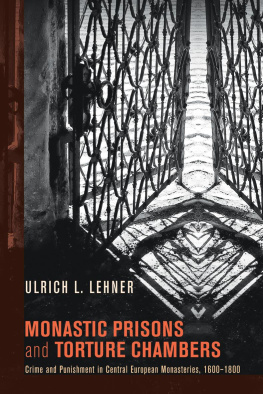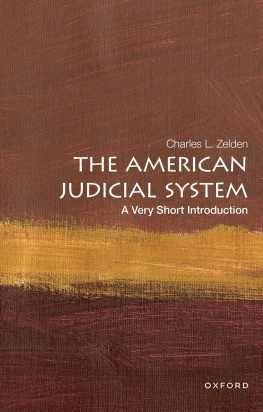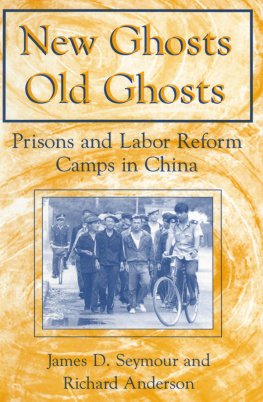Transcribers Note:
The position of illustrations have been adjusted slightly to avoid falling in mid-paragraph.
Please see the transcribers at the end of this text regarding the few textual issues encountered during its preparation.
The History and
Romance of
Crime
FROM THE EARLIEST TIMES
TO THE PRESENT DAY
THE GROLIER SOCIETY
LONDON
Young Girl Revolutionist Condemned to the Scaffold
So severe was the Russian government in the measures adopted to repress the revolutionists that mere school-girls were exiled, imprisoned or executed. Many well-born girls made it their chief aim to help the peasants, enduring the privations and hardships of the labouring classes. Madame Vera Phillipova, a young woman of great beauty, was long the most popular person in the revolutionary movement. She became identified with the conspiracy of the Fourteen, and was thrown into the Schlsselburg for the term of her natural life.
Russian Prisons
ST. PETER AND ST. PAUL
THE SCHLSSELBURG
THE OSTROG AT OMSK
THE STORY OF SIBERIAN EXILE
TIUMEN, TOMSK, SAGHALIEN
by
MAJOR ARTHUR GRIFFITHS
Late Inspector of Prisons in Great Britain
Author of
The Mysteries of Police and Crime,
Fifty Years of Public Service, etc.
THE GROLIER SOCIETY
EDITION NATIONALE
Limited to one thousand registered and numbered sets.
NUMBER 307.
INTRODUCTION
The huge empire founded by the Czars of Russia in the latter half of the sixteenth century was based upon absolute autocracy. The Czar by virtue of his divine origin exercised absolute authority over the many diverse elements consolidated under his sovereign will. From the earliest times no idea of personal liberty was tolerated; the slightest expression of independence in thought and action was peremptorily forbidden. The attitude of the government has ever been uncompromisingly severe toward all malcontents, and Russian history for the last two centuries is one long record of conspiracy constantly afoot, and constantly repressed by savagely cruel coercion. Imprisonment, the absolute loss of physical freedom, has taken a wider meaning in Russia than in other countries, for it is the lot in one form or another of two classes of offenders: the ordinary criminal under a civil code, from which capital punishment is now excluded, and the political dissidents deemed criminal by the arbitrary government of the land and deserving of exemplary and vindictive punishment. Russian prisons are in some respects the worst and most horrible the world has seen, and they are more especially reprehensible in these latter days when humane considerations are allowed weight in the administration of penal institutions.
In giving a description of Russian prisons as they have been and to some extent still remain, it is fair to state that the facts are authenticated by unimpeachable evidence. We have the statements of eye-witnesses speaking from their own knowledge, and these unsparing critics have not always been foreigners and outsiders; Russians themselves have also raised their indignant voices in energetic protest, and official reports can be quoted to substantiate many of the charges. On the other hand, Russian methods have found champions and apologists among travellers, who were, perhaps, superficial observers, easily misled, and their accounts cannot in the least upset the conclusions arrived at by more thoroughgoing and disinterested investigators. Such men as George Kennan, indefatigable, honest, courageous and of the highest veracity, have framed an indictment from which there is no appeal. The facts have been vouched for, moreover, by the trustworthy narratives of those who have themselves been personal victims of the worst horrors inflicted, and buttressed by confidential reports from great Russian functionaries sent direct to the Czar. Secret despatches which have fallen into hands for which they were not intended, and have been made public by the searchers for truth, frankly admit the justice of the sentence passed upon at least one frightful portion of Russian penal institutions,the system of exile to Eastern Siberia. Governor-General Anuchin twice addressed the Czar Alexander III, in 1880 and 1882, after long tours of personal inspection, in such condemnatory terms that the mighty ruler upon whom the terrible burden of responsibility rested, was moved to endorse the report in his own handwriting with the words, It is inexcusable, even criminal, to allow such a state of affairs in Siberia to continue. The frightful system which allowed an irresponsible bureaucracy to sentence untried persons to exile by so-called administrative process is fully explained and described in the present volume.
CONTENTS
| CHAPTER | PAGE |
| Introduction |
| I. | General Survey |
| II. | Two Famous Fortresses |
| III. | The Exile System |
| IV. | The Ostrog at Omsk |
| V. | Life in the Ostrog |
| VI. | Tiumen and Tomsk |
| VII. | Vagabondage and Unions |
| VIII. | Treatment of Politicals |
| IX. | Changes in System |
| X. | Saghalien |
List of Illustrations
| Young Girl Revolutionist | Frontispiece |
| Fortress of Peter and Paul | Page |
| Russian Prisoners |
RUSSIAN PRISONS
CHAPTER I
GENERAL SURVEY
Commencement of judicial reform in RussiaAbandonment of knout and branding ironThe pletTwo classes of prisons, the lock-up and the central or convict prisonsExperiences of a woman exiled from RussiaTestimony of Carl JoubertThe state of the central prisonsThe model prison in St. PetersburgPunishments inflictedThe food in different prisonsAttempted escapesMyshkinHis early history and daring exploitsFailure of his plan to rescue Chernyshevski from SiberiaHis escape, recapture, and sentence of deathThe prisoner Medvediev.
A definite movement toward judicial reform began in Russia in the early sixties. The old law courts with their archaic procedure and evil repute as sinks of bribery and corruption were abolished. Trial by jury was revived, and justices of the peace were established to dispose of the smaller criminal offences. Shortly afterward, two of the most disgraceful features in the Russian penal code, the knout and the branding iron, disappeared. The punishment of splitting the nostrils to mark ineffaceably the prisoners exiled to the salt mines of Okhotsk also ceased, and the simple Chinese no longer were surprised with the sight of a hitherto unknown race of men with peculiar features of their own. The knout, however, had long served its devilish purpose. It was inflicted even upon women in the time of Peter the Great, and was still remembered as an instrument which would surely kill at the thirtieth stroke, although in the hands of a skilful performer a single blow might prove fatal.
Flogging did not go entirely out of practice and might still be ordered by peasant courts, in the army and in the convict prisons. But another brutal whip survived; the plet is still used in the far-off penal settlements, although rarely, and only upon the most hardened offenders. It is composed of a thong of twisted hide about two feet in length, ending in a number of thin lashes, each a foot long, with small leaden balls attached, and forms a most severe and murderous weapon. The number of strokes inflicted may vary from twenty-three to fifty and at Saghalien in some cases reaches ninety-nine. If the victim has money or friends, the flogger is bribed to lay on heavily; for when the blow is so light as to fail to draw blood, the pain is greater. By beginning gently the flagellator can gradually increase the force of each blow until the whole back is covered with long swollen transverse welts which not uncommonly mortify, causing death.








